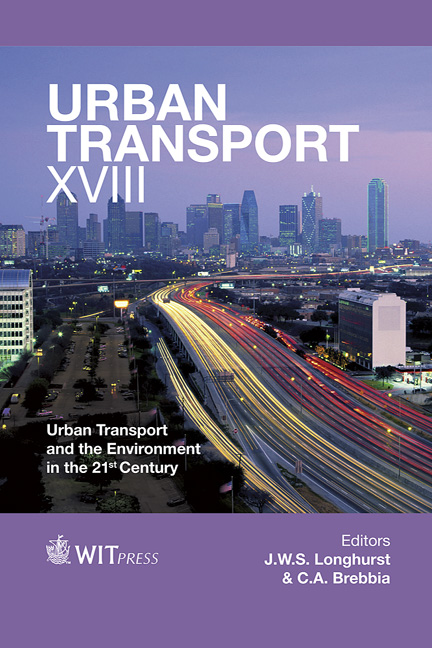Tehran Traffic Congestion Charging Management: A Success Story
Price
Free (open access)
Transaction
Volume
128
Pages
12
Page Range
445 - 456
Published
2012
Size
1,202 kb
Paper DOI
10.2495/UT120381
Copyright
WIT Press
Author(s)
H. Behruz, A. Safaie & A. P. Chavoshy
Abstract
Tehran, the capital of Iran, is the largest city of the country with more than 8 million residents within an area of 600 square kilometers; it has more than 4 million vehicles and 4 million motorcycles as well, over a large scattered road network consisting of 4 active metro ways and 5 active bus rapid transit lanes. Nevertheless, deficiency of transportation systems in Tehran has led us to achieve the first place in the world in air and noise pollution. At 1980, Tehran municipality lined a border around the city center, and defined a traffic congested area through which any entry for vehicles since then needs permission. Although such permission is only granted to a very small group of people, like physicians, there was still a great trespassing rate due to the insufficient capability of control. Until the past year, all the entry roads to the restricted zone were controlled by police officers. There are as many as 5 million vehicles passing the borders each month of which 20% or 1.1 million are illegal. Thus, efficient control is a major need, and if systemized, it can deliver vital information on traffic data. In the past year, Tehran Traffic Control Company implemented an automated control of the borders, using 103 high resolution cameras which contributed to the detection of more than 80% of illegal entries, and has become a very useful tool to collect traffic data for further analysis. This paper discusses this success story. Keywords: Tehran traffic problems, congestion charging, congestion pricing. 1 Introduction Tehran is the capital and largest city of Iran with a population of over 12 million and an approximate city area of 600 square kilometers which, according to
Keywords
Tehran traffic problems, congestion charging, congestion pricing.





